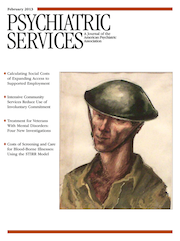The Quest for Mental Health: A Tale of Science, Medicine, Scandal, Sorrow, and Mass Society
Ian Dowbiggin, a history professor, starts The Quest for Mental Health at the end of the 18th century with the “English Malady” and ends with contemporary greed, graft, and corruption, asserting that disorders have been created to be treated, particularly with medications. Dowbiggin presents a fast-paced tale of the evolution of psychiatry in North America, but this tale is not history so much as it is commentary. Dowbiggin’s story is one of fad following fad, all masquerading as psychiatric “diseases.” Dowbiggin does not differentiate between his reporting and his editorializing, and herein lies the first problem for the uninitiated reader.
The second problem is that The Quest for Mental Health has too many inaccuracies and twists of facts. Perhaps most glaring is referring to Sigmund Freud as a “psychologist.” Clifford Beers’ testimonial, A Mind That Found Itself (1908), was not the basis for the “theory that there were ways to treat mental illness other than hospitalization.” This understanding is not a theory, and the practice was debated and utilized for many decades before Beers was born. Dowbiggin refers to the Group for the Advancement of Psychiatry (GAP) as a “collection of committees within the American Psychiatric Association,” missing entirely the origins as a protest group outside of the APA. Dowbiggin claims that with the excitement over the new drug chlorpromazine (Thorazine) in 1954, psychiatrists did not remember that “drug treatment of people with severe mental disabilities was far from new.” There are no data to indicate that psychiatrists in the 1950s believed that before that decade they had never used medications. The psychiatrists in the state hospitals using chlorpromazine were probably the same ones who had been using other medications in the 1940s, and most knew that psychiatrists at their institution had been using medications for 50 to 100 years (depending on the history of that institution).
Dowbiggin’s assertion that Hollywood turned on psychiatry with the movie One Flew Over the Cuckoo’s Nest, having previously portrayed psychiatrists in positive ways, is not supported by the films that were made. For example, the psychiatrists in The Snake Pit (1948), with two exceptions, come off absolutely terribly; furthermore, the superintendent of the state hospital in One Flew Over the Cuckoo’s Nest (played by the superintendent of Oregon State Hospital at the time, Dean Brooks) is a most sympathetic character. Dowbiggin makes a huge leap when he infers that changes the APA made in the modern era of protests were direct results of those protests. Dowbiggin boldly states that Kennedy was the first President of the United States to “ever address Congress on mental health issues.” He apparently forgot about President Franklin Pierce’s address to Congress on May 3, 1854. And on and on the misstatements go.
The third problem is the author’s tendency to refer to individuals by their diagnoses, thereby emphasizing his points about how a psychiatric label determines one’s fate. There’s no need to refer to persons who have a diagnosis of schizophrenia as “schizophrenics.”
A fourth problem is Dowbiggin’s tendency to attribute to all of “psychiatry” what is believed by only one or two psychiatrists. For example, he contrasts medicine’s progress in the first half of the 20th century with the mental health field’s possession of “hopes and bold theories, but little else.” He refers to “some psychiatrists” admitting their treatments were “rubbish.” In a book with chapters with over 100 footnotes, this statement, which Dowbiggin encloses in quotation marks, is unreferenced.
If you are a reader well informed about the history of psychiatry in North America, The Quest for Mental Health presents a viewpoint worth considering. If you are a naïve reader of psychiatry’s history, this is not the treatise to read. Instead, pick up a copy of Gerald Grob’s The Mad Among Us (1), and start there.
1 : The Mad Among Us: A History of the Care of America’s Mentally Ill. New York, Free Press, 1994Google Scholar



